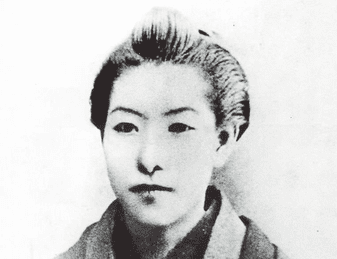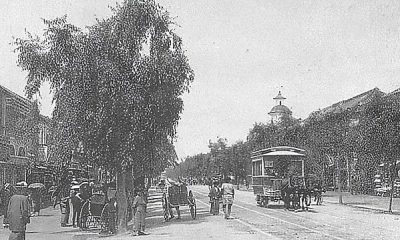Japan novelist and Ichiyō Higuchi (1872-1896): Blighted by Sorrow
Lee Jay Walker
Modern Tokyo Times

The Japanese novelist Ichiyō Higuchi (1872–1896) moved through life as if fate had marked her for sorrow. Tuberculosis stalked her family like a merciless shadow, first taking her father, then her brother, and finally claiming her own life at only twenty-four. She left behind the faint outline of a future that would never arrive.
Her talent was just beginning to unfurl when the disease struck. Readers today can only speculate how her voice would have deepened, how her prose might have widened into new emotional horizons. At the very moment this gifted young woman was discovering her strength, the same illness that had hollowed out her family cut her down, leaving behind the image of a “radiant flower” torn from its stem before midsummer.
Short stories were her chosen craft, though poetry sparkled through her imagination from an early age. Her inner world was refined, almost luminous, and entirely unlike the hard-edged reality of her parents, who had been born into the peasantry.
From the age of fourteen, she immersed herself in poetry, confiding in her diary her bitterness toward the rigid class system that caged so many lives in Meiji Japan. She wrote openly of poverty’s crushing pressure and the quiet despair that stole into the corners of her days.
The deaths of her brother and father between 1887 and 1889 plunged her into deeper uncertainty. Their failed business venture had already weakened the family’s finances, and grief left no room for pause. After relocating to the Hongo district, she took in laundry and sewing work simply to endure the unforgiving costs of existence. It was a grim routine, stitched together by necessity, even as her writing burned brighter in the dark.

Her early literary efforts were often dismissed as being too steeped in the elegant cadences of Heian poetry. Yet this very influence, far from being a flaw, revealed how deeply she felt the suffocating hierarchies of her age. Beneath the refined veneer, Higuchi carried the bruises of the Meiji class system—its pretenses, its ambitions, and its quiet cruelties. Those who knew her work sensed that her use of classical forms was not mere imitation but a subtle shield, a way to assert her intellect in a world eager to dismiss young women of humble origins.
Her breakthrough came like a sudden clearing in a storm. With Umoregi (“In Obscurity”), she struck a new and unmistakable chord. When the prestigious Miyako no Hana journal published the story in late 1892, it was as if a hidden lantern had been uncovered; critics and readers alike finally recognized the brilliance that had long flickered beneath the surface.
Yet even as acclaim grew, hardship clung to her life with unyielding persistence. Financial pressures mounted, forcing Higuchi, her mother, and her sister to move to the edge of Yoshiwara—the notorious red-light district whose lantern-lit nights concealed countless sorrows. What seemed, at first, a humiliating descent became a turning point. Surrounded by the struggles of women living on society’s margins, Higuchi’s eyes opened to new emotional landscapes. Yoshiwara’s mixture of desperation, resilience, and fleeting dreams infused her writing with sharpened moral insight and unforgettable human depth.
From this crucible emerged the works that secured her place among Japan’s most luminous voices: Jūsan’ya, Nigorie, Ōtsugomori, Takekurabe, Wakaremichi, and Yamiyo. Each carries the imprint of a life lived in tension—between poverty and brilliance, fragility and defiance, society’s shadows and the fierce light of her craft.

Modern Tokyo News is part of the Modern Tokyo Times group
http://moderntokyotimes.com Modern Tokyo Times – International News and Japan News
http://sawakoart.com – Sawako Utsumi and her website – Modern Tokyo Times artist
https://moderntokyonews.com Modern Tokyo News – Tokyo News and International News
PLEASE JOIN ON TWITTER
https://twitter.com/MTT_News Modern Tokyo Times
PLEASE JOIN ON FACEBOOK